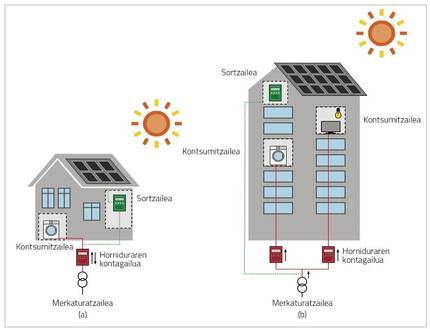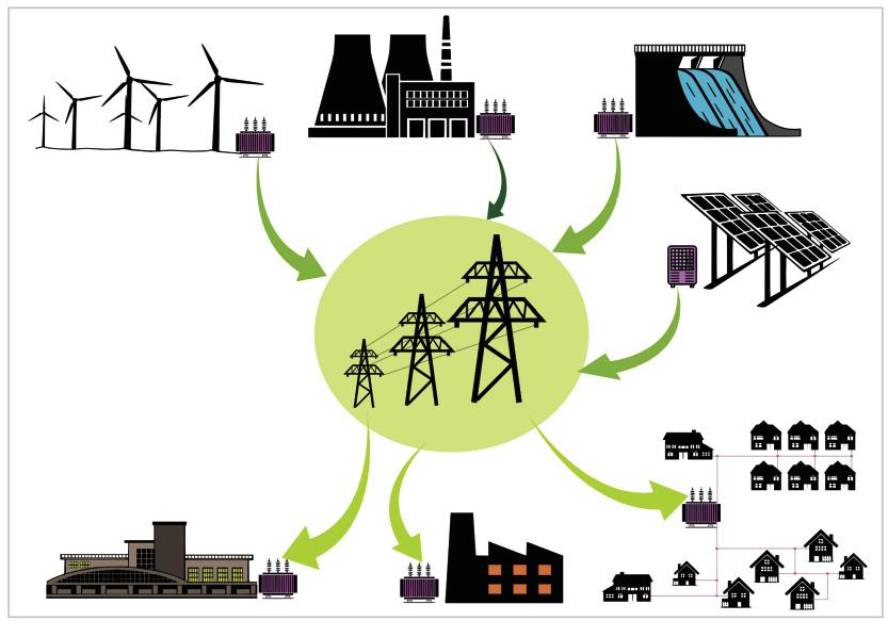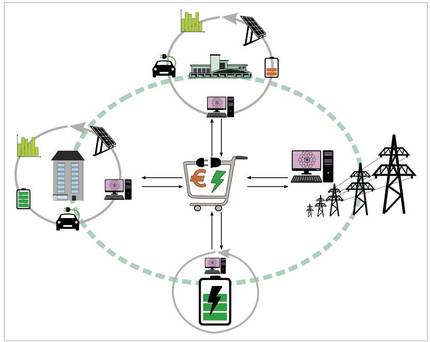Electric self-consumption: towards a new energy model based on self-management
Energy transition
The energy transition seeks to transform the current energy model. Achieve a new and sustainable energy model that guarantees the well-being of citizens and future generations. The fight against climate change is one of the main motivations to drive this change, so it is essential to take decisions to limit climate change and its consequences and achieve more sustainable development [1-2].
The European Union has adopted a number of measures for reducing emissions and adapting to climate change for the years 2020 and 2030 [3], including:
- Reduce greenhouse gas emissions by at least 40% compared to 1990 levels.
- Increase the minimum renewable energy contribution to 32% of total energy consumption.
- Increase the minimum energy efficiency contribution to 32.5%.
In the Basque Country there is also a commitment to achieving these objectives (a reflection of this is the CAPV Energy Sustainability Act [4]).
Analysis of the current Basque energy model
Before discussing the energy transition further, it is necessary to analyse the current energy model of the Basque Country and to explain some significant points.
On the one hand, the energy demand of the Basque Country depends largely on imports, 94% of the energy of the Autonomous Community of the Basque Country (CAPV) and 80% of Navarra comes from outside [5]. And fossil fuels still have a very important weight in total energy consumption.
As for renewable electricity generation, although in the last decade the power generation capacity of hydroelectric and wind energy has been relatively stable, as indicated in the recent 2020 report of the Electricity System published by the Spanish Electricity Network (REE) [13], only 16.5% of the total power currently installed in the CAPV corresponds to renewables: 5.9% corresponds to solar, photo-3% corresponds to wind. If we look at the Navarra data, 53.2% of the total installed power would be renewable: 6.8% hydropower, 32.1% wind energy and 4.7% photovoltaic [13]. If we look at the situation in the north, the dependence of the French state on nuclear energy is high, as between 75 and 80% corresponds to nuclear energy, 10-15% to hydro and only 10% to renewables.
Moreover, the structure of the electricity system in the Basque Country is centralised [6]. In other words, the main generation points are prioritized, which are located far from the consumption points (which implies a greater loss of transport, distribution and cost). Moreover, the current network enables energy exchange in one direction, with great difficulty in controlling and managing the impact of demand.
Finally, the electricity system follows the operation of a hierarchical model, since after the liberalisation stage, the consumer only pays his electricity [7].

Therefore, despite technological developments, we continue to maintain a highly oil dependent energy model. Faced with this situation, in the course of the energy transition undertaken, it is necessary to establish a new energy model, sustainable, distributed (decentralised), environmentally friendly (decarbonised), digitised and that allows the consumer to get involved and feel the fundamental part of the system. Self-consumption (especially hybridized with storage) and energy communities will play a key role in the paradigm shift [8-9].
Electrical self-consumption
Self-consumption is the production of energy for self-consumption through renewable energies. Today, self-consumption systems are based on solar photovoltaic installations with battery or hybrid storage. Self-consumption can be achieved by the incorporation of an installation to any power supply point in households, businesses, institutions, schools, municipalities [8-9].
Royal Decree 244/2019 defines two types of self-consumption [10-11]:
- Individual: a single consumer associated with solar photovoltaic installation.
- Collective or shared: several consumers are linked to the solar photovoltaic installation.
And in the solar photovoltaic installation you can use one of the following self-consumption modes:
- No surpluses: to ensure that surpluses are not discharged to the network, a special system needs to be installed. It may be interesting to simplify the necessary permits.
- With surpluses and compensation: the excess energy not consumed is poured into the grid and saved on the electricity bill at the price of the compensation tariff agreed with the trader. The bonus resulting from the compensation may not exceed the economic value of the energy consumed. If this happened, this energy would remain in the hands of the trader. Therefore, it is important that it is not oversized in the dimensioning of our installation.
A number of requirements must also be met in this case:
- The maximum compensated power may not exceed 100 kW.
- Establish criteria for the distribution of generated energy. In other words, we have to decide how much energy each consumer has. They are usually fixed criteria.
- With surpluses and without compensation: surpluses of unconsumed energy are sold in the wholesale electricity market to the value of Pool or updated energy. Normally this Pool value is more economical than the consumer pays.
[The R.D.]. 244/2019 on self-consumption has been a fundamental step in the implementation of photovoltaic energy and self-consumption in the Low Voltage electricity network, since now the consumer can also take on the role of the producer, which we will hereinafter call “prosumer”, and he can bet on energy self-consumption to meet his energy needs.
[Challenges of shared self-consumption]. Energy community
As indicated in the previous paragraph, on the road to energy transition, the consumer can acquire new skills through self-consumption, as it can produce, consume, store or sell energy. The energy surplus (produced but not consumed) may be accumulated in batteries and sold itself or through an intermediary. This will contribute to the empowerment of consumers and enable a more transparent and democratic model. It is therefore possible in the future that an important part of society which has been a mere consumer will become a prosumer (producer + consumer). For this reason, in the Basque Country thousands of prosumers with own batteries are expected to be present in the network.
Moreover, the lack of sufficient expertise on the part of most users and the complexity of the operation of the electricity system and market opens the door to a new agent responsible for the management of its installations, the aggregator of demand. The aggregator would manage the facilities of many prosumers. It can also obtain additional benefits by offering network adjustment services [6]. On the other hand, optimal storage management will provide flexibility to the electricity grid, increasing the capacity to adapt household production and consumption to grid requirements.
It should be noted that the figure of the aggregator remains an unregulated figure. However, given the new regulations coming from Europe, this will change in the short term.
What a local energy community is:
Energy communities are also one of the driving forces behind the new legislation in Europe. By definition, “the energy community is a legal organization around which people and entities from the surrounding environment, both public and private, are organized to collaborate in an activity related to the energy sector, providing services to its members or the local community, or other socio-economic and environmental benefits.”
Energy communities will play an important role in the energy transition. They transform the traditional energy generation and distribution system into a local area and rely on smart exploitation of local renewable energy resources to combat climate change. The aim of the energy community is to promote socio-economic and environmental values, leaving economic benefits in the background, especially to allow greater participation and empowerment of the local consumer in decision-making in the electricity market.
On the other hand, while RD 244/2019 has been a great step forward in the development of self-consumption and energy communities, it is now necessary to analyze and develop new business models around energy communities.







